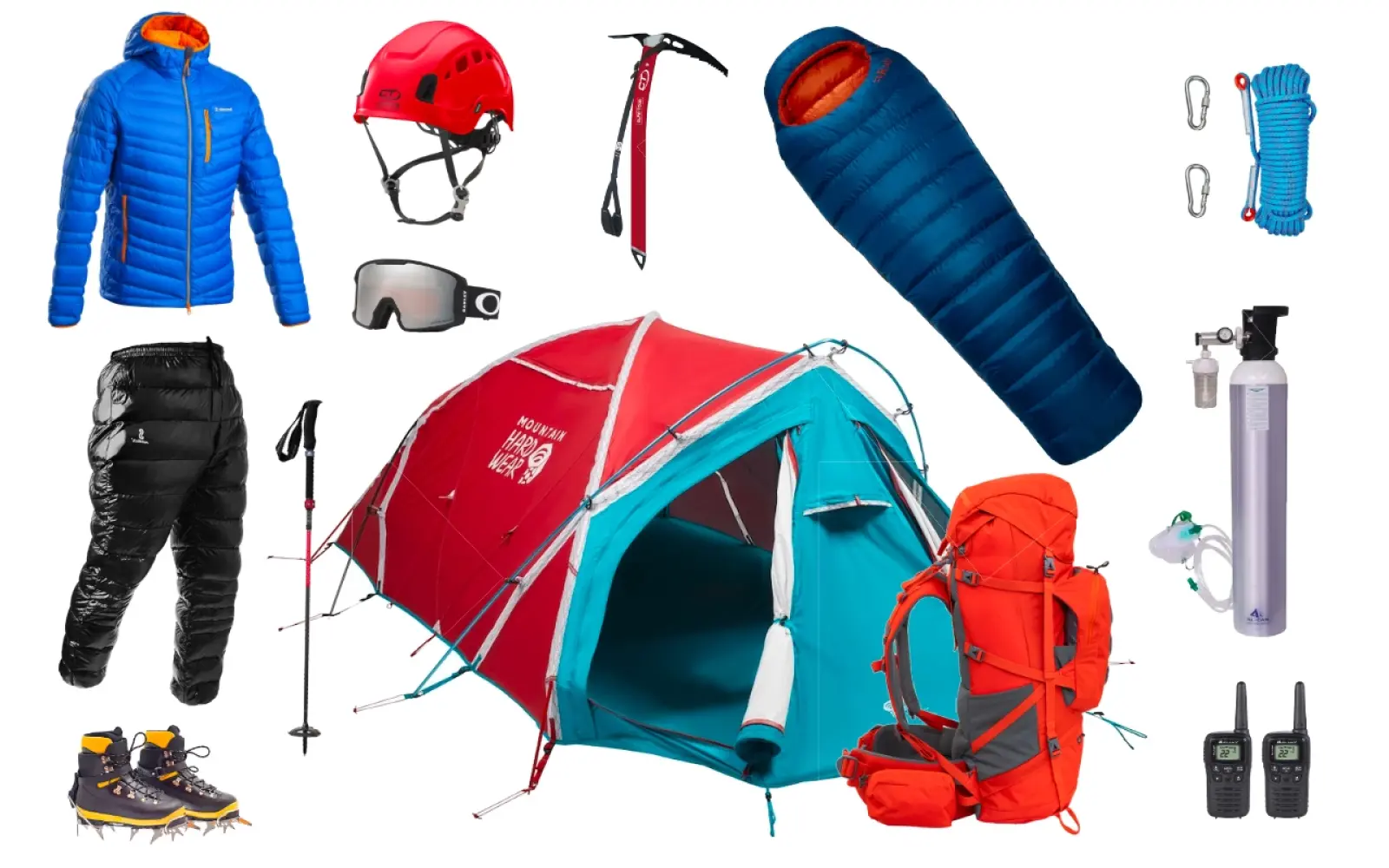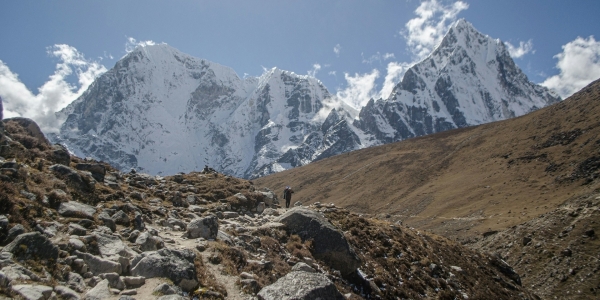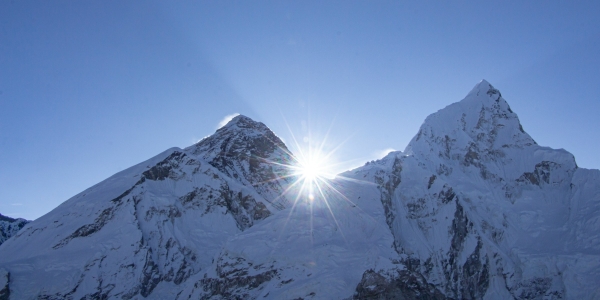Challenges of Exploring Mount Everest
Mount Everest, the tallest peak on Earth, standing at a staggering 29,032 feet above sea level, beck...

Himalayan Forever Treks understands that packing the right gear is crucial for a successful and enjoyable Everest Base Camp (EBC) adventure. The trek takes you through challenging terrains and extreme weather conditions, from hot sun to freezing nights. Proper preparation with suitable clothing and equipment can make a huge difference in comfort, safety, and overall experience. Our expert guides recommend packing light but smart, focusing on quality and layering to adapt to changing temperatures.
Every trekker’s packing list will be slightly different based on personal needs, but some essentials are non-negotiable. From moisture-wicking base layers to durable hiking boots, and from thermal wear to reliable outerwear, Himalayan Forever Treks ensures you’re well-equipped for the highs and lows of this iconic trek.
Mount Everest is the tallest mountain on Earth, standing at 8,848.86 meters (29,031.7 feet) above sea level. It is part of the Himalayan mountain range, which stretches across Nepal, Tibet (China), Bhutan, and India. Everest lies on the border between Nepal and Tibet. The mountain is known as Sagarmatha in Nepali, meaning “Forehead of the Sky,” and Chomolungma in Tibetan, meaning “Goddess Mother of the World.”
Everest is a symbol of adventure, exploration, and extreme mountaineering. It attracts climbers from all over the globe who aim to reach its summit, which is considered one of the greatest feats in mountaineering. The first successful ascent was made by Sir Edmund Hillary and Tenzing Norgay in 1953.
Everest Base Camp (EBC) is the starting point for mountaineers who aim to climb Mount Everest. There are two main base camps:
The South Base Camp, located at about 5,364 meters (17,598 feet) above sea level, is the more popular trekking destination for adventurers who want to experience the Everest region without climbing the summit. It offers stunning views of Everest and nearby peaks, traditional Sherpa villages, and a chance to immerse in Himalayan culture.
Trekking to Everest Base Camp is a physically challenging but rewarding journey that takes you through scenic landscapes, high mountain passes, and Buddhist monasteries. It’s a fantastic way to experience the majesty of Everest up close, even if you’re not climbing it.
Layering is the key strategy when it comes to clothing for the Everest Base Camp trek. Temperatures can vary widely, so wearing multiple layers allows you to adjust easily throughout the day. Start with moisture-wicking base layers that keep sweat away from your skin, then add insulating mid-layers like fleece or down jackets, and finally a waterproof and windproof outer shell to protect against snow and wind.
We recommend avoiding cotton as it traps moisture and can cause chill. Instead, opt for synthetic or wool fabrics that dry quickly and retain warmth. Having a good balance of lightweight and thermal layers is essential for both comfort and safety on the trail.
Short Point List:
Layering Clothes for Everest Base Camp Trek
Layering allows you to customize your clothing to match the weather and activity level. The base layer manages moisture, the mid-layer traps heat, and the outer layer shields you from wind and moisture. This system also helps prevent overheating and sweating, which can lead to chills when you stop moving.
During the day, when hiking, you might only need the base and mid-layers. In the evening or at higher altitudes, the outer layer becomes essential. Having a good-quality down or synthetic insulated jacket is vital for those cold mountain nights. Additionally, quick-drying hiking pants and thermal leggings help maintain comfort during long trekking days.
Short Point List:
Best Jackets and Outerwear for Everest Base Camp
Choosing the right jacket for the trek is critical since the weather can be unpredictable. A quality waterproof and windproof shell jacket with breathable fabric (like Gore-Tex) will keep you dry in rain or snow while allowing sweat to escape. Pair this with an insulated down jacket or synthetic alternative for warmth during cold nights and rest days.
Look for jackets with features such as adjustable hoods, multiple pockets, and ventilation zippers for increased comfort. Layering a lightweight packable down jacket under the shell gives you the versatility to handle temperature swings. Himalayan Forever Treks recommends investing in trusted brands to ensure durability and weather resistance.
Short Point List:
Choosing Thermal Wear for High-Altitude Treks
Thermal wear is essential for staying warm and comfortable at high altitudes where temperatures can drop dramatically, especially at night. Thermal base layers made from merino wool or synthetic fibers provide insulation without bulk and effectively wick moisture away from the skin. Avoid cotton thermal wear as it holds moisture and loses insulation properties when wet.
Layering thermals under your trekking clothes helps maintain core warmth, reducing the risk of hypothermia. Thermal socks, gloves, and hats also play a crucial role in protecting extremities from frostbite. Himalayan Forever Treks advises trekkers to carry at least two sets of thermal underwear to ensure dryness and warmth throughout the journey.
Short Point List:
Himalayan Forever Treks knows that your feet are your most valuable asset on the Everest Base Camp trek. The right footwear not only provides comfort but also protects you from injuries on rocky, uneven trails and in cold conditions. Investing in high-quality hiking boots designed for rugged mountain trekking is essential. These boots should offer strong ankle support, waterproofing, and breathability to keep your feet dry and blister-free over long distances.
In addition to boots, socks and gaiters are vital accessories. Good trekking socks made from wool or synthetic materials wick moisture away and cushion your feet. Gaiters help keep dirt, snow, and debris out of your boots, especially on snowy or muddy sections. Together, these elements protect your feet and enhance your overall trekking experience, reducing the chance of painful blisters or cold injuries.
Short Point List:
Best Hiking Boots for Everest Base Camp
Choosing the right hiking boots is one of the most important decisions for the trek. Boots should be well broken-in before the trip to avoid discomfort. Himalayan Forever Treks recommends boots that are waterproof yet breathable, with solid grip soles for traction on slippery or rocky terrain. High-cut boots offer better ankle support, which is crucial on steep and uneven paths.
It’s important to select boots that have good insulation for warmth but don’t cause overheating during strenuous hiking. Combining boots with appropriate socks and gaiters ensures your feet stay dry, warm, and comfortable, minimizing the risk of blisters and cold-related injuries during the trek.
Short Point List:
Socks and Gaiters: What You Need
Wearing the right socks can prevent blisters, keep your feet dry, and provide necessary cushioning. Wool socks, particularly merino wool, are ideal as they regulate temperature and wick moisture. Synthetic blends are also good for moisture control and durability. Avoid cotton socks as they retain moisture and increase blister risk.
Gaiters are protective coverings worn over your boots and lower legs to keep out snow, dirt, and rocks. They are especially useful in snowy or muddy sections of the trail. Lightweight, breathable gaiters are best for maintaining comfort while providing protection without restricting movement.
Short Point List:
Essential Trekking Accessories for Comfort
Beyond boots and socks, a few additional accessories can greatly improve trekking comfort. A good pair of UV-protection sunglasses protects your eyes from intense sunlight and snow glare at high altitudes. A wide-brimmed hat or cap and lightweight gloves help shield you from sun and wind exposure.
Consider also moisture-wicking gloves for daytime hiking and insulated gloves for colder evenings. Using comfortable, breathable trekking sandals for rest days at lodges allows your feet to breathe and recover. Himalayan Forever Treks advises packing these small but essential items to keep you comfortable and protected throughout your journey.
Short Point List:
Trekking Everest Base Camp requires reliable gear to support your physical demands and ensure safety. Himalayan Forever Treks highlights the importance of packing lightweight yet durable equipment designed for high-altitude trekking. From sturdy backpacks and warm sleeping bags to trekking poles, having the right gear allows you to carry essentials comfortably and navigate the terrain more efficiently.
Well-chosen gear can improve your stamina and reduce injury risk. Knowing what to bring and how to use it properly is part of the preparation process that Himalayan Forever Treks ensures for all trekkers. Proper equipment enhances your comfort, security, and ability to enjoy the breathtaking mountain environment.
Must-Have Trekking Gear for Everest Base Camp
Essential trekking gear includes a durable backpack with enough capacity for your clothing, food, water, and personal items. Hydration systems or water bottles are crucial for staying hydrated. Headlamps are necessary for early starts or nighttime movements, especially in tea houses with limited lighting.
Other key items include a compact first-aid kit, sunscreen with high SPF, lip balm, and personal hygiene supplies. Having a camera or smartphone with extra batteries or power banks is also recommended to capture the stunning views. Himalayan Forever Treks provides a detailed checklist to help trekkers prepare all necessary items.
Short Point List:
Sleeping Bags and Backpacks: What to Bring
A good sleeping bag rated for temperatures well below freezing is vital since mountain nights can be extremely cold. Himalayan Forever Treks advises choosing a lightweight, compressible sleeping bag with a temperature rating of at least -10°C (14°F) or lower. A sleeping bag liner adds extra warmth and hygiene.
Backpacks should fit comfortably and distribute weight evenly. Look for adjustable straps, padded hip belts, and multiple compartments for easy access to gear. A daypack is also useful for carrying essentials during daily hikes. Investing in quality sleeping bags and backpacks ensures you stay warm and carry your belongings without strain.
Short Point List:
Using Trekking Poles on the Everest Trail
Trekking poles are invaluable tools on the Everest Base Camp trek. They help reduce strain on your knees and joints, especially during steep ascents and descents. Poles also improve balance on rocky or slippery terrain, increasing safety and confidence.
Adjustable, lightweight poles with comfortable grips and shock-absorbing features are best. Himalayan Forever Treks recommends practicing with poles before the trek to get accustomed to their use. Proper use of trekking poles can help conserve energy and reduce fatigue over the long days on the trail.
Short Point List:
At Himalayan Forever Treks, your health and safety are our top priorities. Trekking to Everest Base Camp means dealing with high altitudes, unpredictable weather, and rugged terrain. Packing the right health and safety items can prevent minor issues from turning into serious problems and help you stay fit and energized throughout the trek.
Proper preparation includes carrying a well-stocked first aid kit, understanding how to prevent and treat altitude sickness, and knowing how to maintain hydration and energy levels. These elements are crucial not just for comfort but also for ensuring your trek remains safe and enjoyable. Our guides also provide support and advice on health matters during the journey.
First Aid Kit Essentials for Everest Base Camp
A compact but comprehensive first aid kit is a must-have for any trekker. It should include bandages, antiseptic wipes, blister treatments, pain relievers, anti-inflammatory medications, and any personal prescription medicines. Himalayan Forever Treks recommends including diarrhea medication, antiseptic cream, and insect repellent as well.
Additionally, carrying sunscreen with a high SPF, lip balm with UV protection, and eye drops is essential to protect against harsh sun and dry mountain air. Regular checks of your kit ensure you have everything you need before starting the trek.
Short Point List:
Altitude Sickness Medication and Prevention Tips
Altitude sickness is a common challenge on the Everest Base Camp trek due to the rapid ascent to high altitudes. Symptoms range from headaches and nausea to severe dizziness and breathing difficulties. Himalayan Forever Treks advises acclimatizing properly, ascending slowly, and listening to your body to reduce risks.
Medicines such as acetazolamide (Diamox) can help prevent and treat mild altitude sickness but should only be taken after consulting a healthcare professional. Staying well-hydrated, avoiding alcohol, and eating a balanced diet are also key preventive measures.
Short Point List:
Staying Hydrated and Energized on the Trek
Hydration is critical at high altitudes, where dry air causes rapid fluid loss. Himalayan Forever Treks recommends drinking at least 3-4 liters of water daily to avoid dehydration, which can worsen altitude sickness symptoms. Carrying a reusable water bottle and water purification tablets or filters ensures safe drinking water.
Eating nutrient-rich snacks like nuts, energy bars, and dried fruits throughout the day helps maintain energy levels. Balanced meals with carbohydrates, proteins, and fats provide sustained fuel for your body during long trekking days.
Short Point List:
In the remote Himalayan region, staying connected and capturing memories requires thoughtful packing of electronics and miscellaneous items. Himalayan Forever Treks advises trekkers to bring durable, lightweight, and essential electronic gear to stay powered and organized throughout the trek.
From cameras and power banks to chargers and solar panels, having reliable equipment can make a huge difference in convenience and enjoyment. Additionally, carrying all necessary travel documents and permits is mandatory to avoid any last-minute hassles.
Best Cameras and Power Banks for Your Trek
Capturing the stunning landscapes and unforgettable moments is a highlight of the Everest Base Camp trek. Compact, weather-resistant cameras or smartphones with good cameras are recommended. Durable cases and extra memory cards ensure you never miss a shot.
Power banks are essential since electricity access is limited and often expensive in remote areas. High-capacity, lightweight power banks keep your devices charged during long trekking days. Himalayan Forever Treks suggests carrying at least one backup power bank for peace of mind.
Short Point List:
Packing Chargers and Solar Panels for Remote Areas
Charging devices can be challenging in the Everest region due to limited electricity availability and voltage inconsistencies. Carrying reliable chargers compatible with local outlets (usually Type D or M plugs) is crucial. Himalayan Forever Treks also recommends lightweight solar panels or solar chargers as eco-friendly, dependable power sources during your trek.
Solar chargers are especially useful for multi-day treks where power outages are common. Always carry cables and adapters, and consider a portable power strip if you have multiple devices to charge.
Short Point List:
Travel Documents and Permits for Everest Base Camp
Travel documents and permits are mandatory for trekking in the Everest region. Himalayan Forever Treks assists trekkers in obtaining all necessary permits, including the TIMS (Trekkers’ Information Management System) card and the Sagarmatha National Park permit.
Keep your passport, visa, travel insurance, and permits handy during the trek. Carry photocopies and digital backups in case of loss or emergencies. Being organized with documents ensures smooth border crossings and lodge check-ins along the route.
Short Point List:
Preparing the right gear and essentials for the Everest Base Camp trek is as important as the trek itself. With unpredictable weather, high altitude, and challenging terrain, packing smartly ensures your comfort, safety, and enjoyment throughout this once-in-a-lifetime adventure. At Himalayan Forever Treks, we emphasize thoughtful preparation—balancing lightweight, durable, and multifunctional items to help you adapt to every situation on the trail.
By focusing on proper clothing layers, reliable footwear, essential health and safety supplies, and the right electronic gear, you’ll be well-equipped to face the mountain environment confidently. Remember, quality over quantity is key; packing efficiently will allow you to move freely and focus on the breathtaking experience ahead. Trust Himalayan Forever Treks to guide you not only on the trail but also in preparing perfectly for your Everest journey.

Mount Everest, the tallest peak on Earth, standing at a staggering 29,032 feet above sea level, beck...

Trekking to Everest Base Camp is a dream shared by adventurers worldwide. The journey promises not j...

Namche Bazaar, a vibrant Sherpa town nestled in the heart of the Himalayas, is a key stop for trekke...
